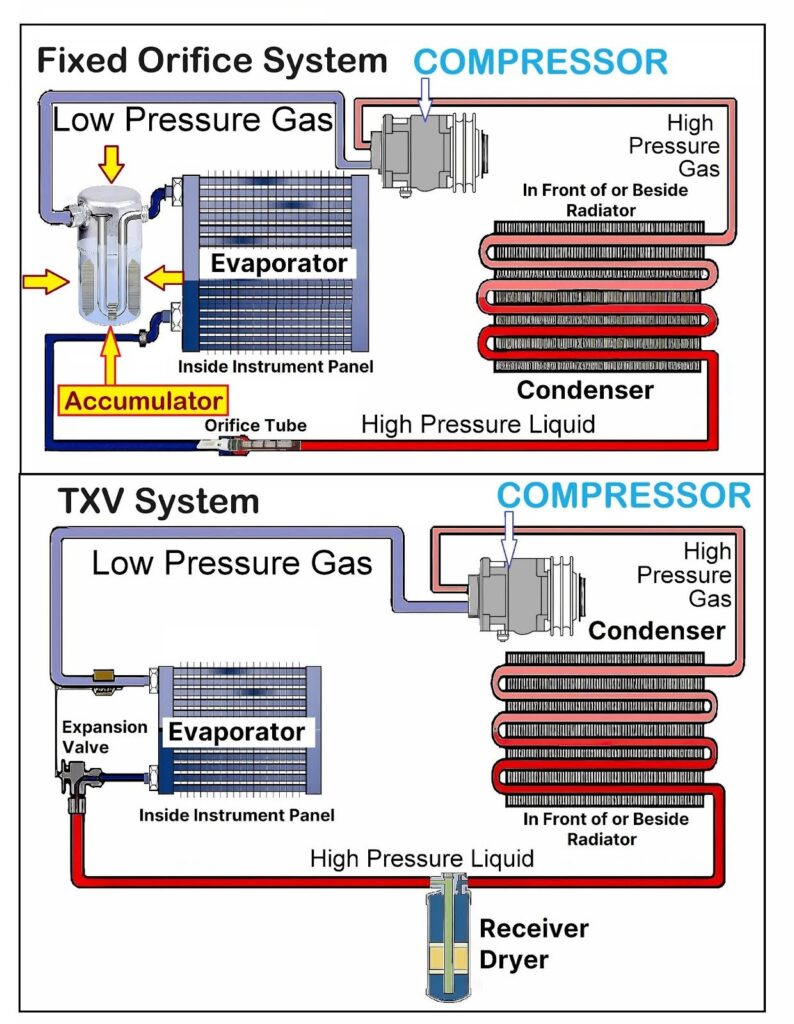The air conditioning accumulator is typically found between the evaporator outlet and compressor suction port, specifically on the low-pressure side of the circuit. It’s usually easy to find because it’s quite large.
The accumulator ensures that the compressor is fully operational. It also retains moisture and contaminants from the system, ensuring oil return and refrigerant circulation in the compressor.

Tips On How to Access the Accumulator
Repairing or replacing an accumulator is a task that’s often left to professionals because of the complexity of the air conditioning system. Here’s an overview of what the process may entail.
The refrigerant must first be pumped out of the system before the accumulator is removed.
If the refrigerant has already leaked out, you can replace the accumulator, but the system must be evacuated of air before recharging, and the right amount and type of refrigerant oil must be added. If the air isn’t removed, the A/C compressor becomes an air compressor and blows things up. If the right amount and type of oil aren’t added, the compressor will be destroyed.
Keep in mind that improper handling of car refrigerant can be dangerous to your health. If you have limited experience with repairing air conditioning systems, it’s best to leave the job to the pros.Caution: Never vent the refrigerant to the atmosphere. It’s extremely illegal. Always wear safety glasses and gloves when working with refrigerant.
Any information provided on this Website is for informational purposes only and is not intended to replace consultation with a professional mechanic. The accuracy and timeliness of the information may change from the time of publication.
































